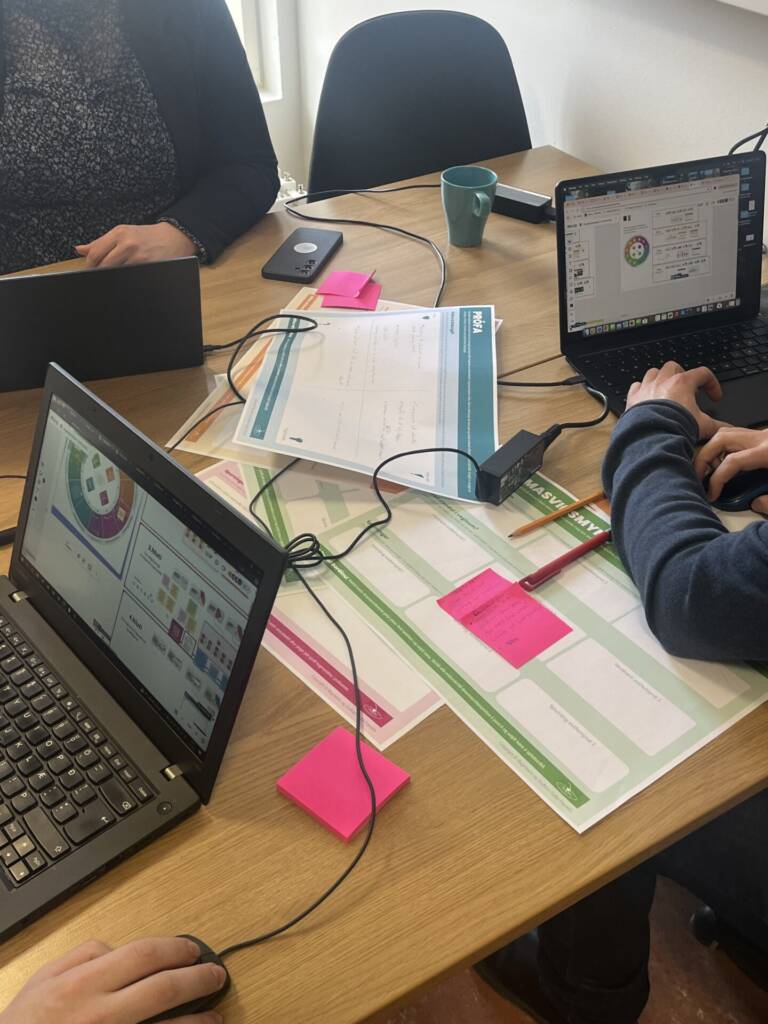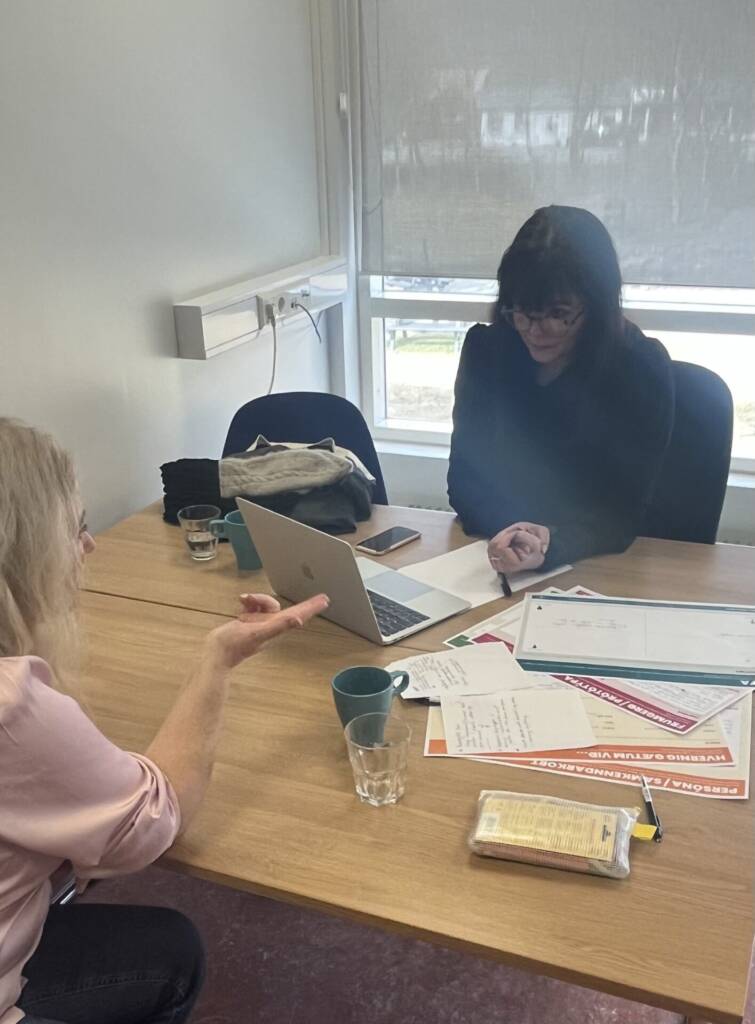SASS Idea Days were held on 1. 3. and 7. April, where design thinking methodologies were used to define problems and come up with well-formed ideas to solve them.
Participants came from all over South Iceland and the first meeting was held on Zoom. There, participants got a glimpse of how conceptual thinking can be promoted and were also introduced to the design thinking tool (circular design wheel/kit). Several exercises were conducted to spark conceptual thinking and at the same time, the participants managed to get to know each other better. The teams learned a little about Miro, one of many programs that facilitate teamwork and ideation, and was used in the brainstorming process during the idea days.
Elva Rakel Jónsdóttir, CEO of Festa, gave a very effective talk about the importance of the circular economy, which ignited the audience’s enthusiasm for solving the problems that arise around consumption habits and waste sorting in Iceland.
On the second day, the groups met at a local meeting and were divided into teams. There, the teams had the opportunity to develop their ideas using the design thinking tool and narrow them down to realistic projects. The day was long and challenging for the participants, as there were many ideas and a lot of creativity that had to be done under considerable time pressure. Guðrún Gyða, a design thinking expert, led the workshop electronically with the assistance of SASS regional development representatives who were on site.
By the end of the day, all teams had laid the foundation for very interesting and cool projects that are of great significance to the circular economy.
By the end of the day, all teams had laid the foundation for very interesting and cool projects that are of great significance to the circular economy.

The third day was a project presentation day where participants practiced delivering concise presentations. Each team was given 3 minutes to present their idea and convince a jury of their project. The jury, which consisted of Sveinn Aðalsteinsson from Orkidea, Freyja Pétursdóttir from the Association of Icelandic Municipalities, Kolfinna Kristínardóttir from Klak, Ingunn Jónsdóttir from SASS and Svava Björk Ólafsdóttir from Rata. They judged the projects based on the following factors:
To the solution:
– solve problems in South Iceland with circular economy measures
– possess novelty
– is likely to be implemented
– presentation and introduction of the project
– solve problems in South Iceland with circular economy measures
– possess novelty
– is likely to be implemented
– presentation and introduction of the project
In addition, how the teams introduced themselves and their backgrounds was evaluated.
It was a great learning experience for everyone to participate in the idea days and we would like to commend everyone who participated for a great day. Participants were open, ready to tackle new projects and step outside their comfort zone in using Miro as well as in conceptual thinking. The organizers are also learning a lot from this project and have received valuable feedback from participants regarding the implementation of the days.

The jury selected the project Circular Economy Project Bank – Textile Education as the winner of the Ideas Days.
The goal of the project bank is to familiarize students with textile recycling, facilitate access to such projects for textile teachers, and provide a waste stream of textiles for school projects. That recycling/recycling projects become a natural and dominant part of textile education in Icelandic primary schools.
Erna Óðinsdóttir, master tailor and textile teacher, received a prize of 250,000.- for this idea, which will hopefully be useful in its implementation.
The SASS regional development representatives would like to thank Rata for the good participation and good management.
The design thinking tool is in the offices of all regional development officers, and interested parties can visit it to learn more about it and how it can be used to solve the challenges of communities in South Iceland.
The design thinking tool is in the offices of all regional development officers, and interested parties can visit it to learn more about it and how it can be used to solve the challenges of communities in South Iceland.


